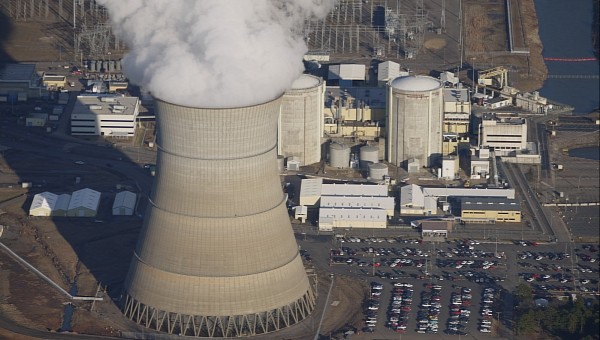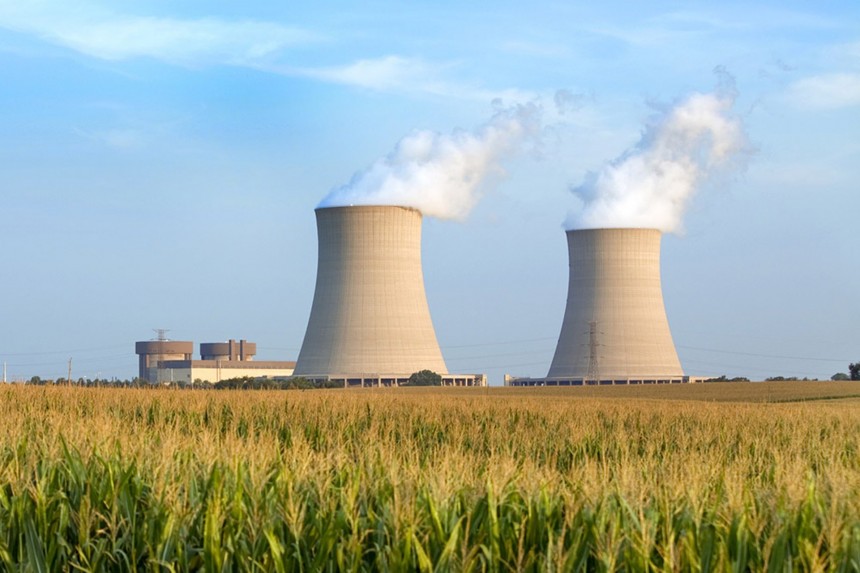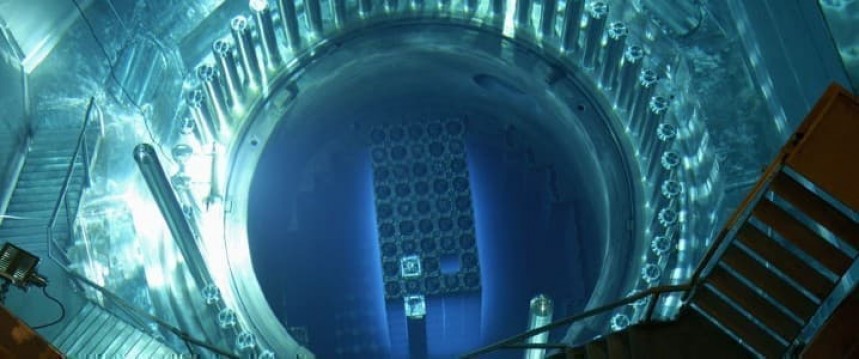Historically, the U.S. has steeled itself against global energy crises slightly better than its European allies, with a few exceptions. Most places in America besides California never quite hit the $7 per gallon mark for gasoline the same way places in Europe did in the last year. But what if that's not the case in the future?
It's a question President Biden aims to answer. But trying to solve America's energy issues with fossil fuels alone won't solve anything. Even in the smog-ridden, barely-regulated 1960s, the American petroleum-energy sector was flanked by a robust nuclear reactor program. A system that, in 2023, is looking a little worse for wear in some cases. An executive-ordered cash influx of $1.2 billion would certainly help fix the problem.
Under the guidelines of what's dubbed the Civil Nuclear Credit Program (CNCP), the first round of federal grants is aimed at domestic nuclear plants in danger of being decommissioned in the next 48 months or have ceased operation after November 15th, 2021. Biden's proposed nuclear stimulus could join this $6 billion investment from the department of energy as one of the crown jewels of infrastructure legislation passed since President Biden's administration began in 2021.
"President Biden's $6 billion investment in the Civil Nuclear Credit Program made it abundantly clear that preserving the domestic nuclear fleet is critical to reaching America's clean energy future," explained U.S. Secretary of Energy Jennifer M. Granholm. "Expanding the scope of this Bipartisan Infrastructure Law funding will allow even more nuclear facilities the opportunity to continue operating as economic drivers in local communities that benefit from cheap, clean, and reliable power."
If anything, the only problem with President Biden's initiative to fund the upkeep of American fission reactors on the brink of going belly-up, might not go far enough. There are currently 92 nuclear reactors operating on U.S. soil. Of those, the states of Illinois and Pennsylvania account for over 20 percent of that figure, with 20 reactors between them.
Recent actions from the White House on that front seem to be a sequel to a previous round of legislation allowing for the owners and operators of America's oldest reactors to receive funding. The oldest of these, the Nine Mile Point Nuclear Generating Station near Oswego, New York, began operation in December 1969, or just under 54 years ago. Imagine an Apollo-era spacecraft operating for that long, and it's easy to understand why America's oldest reactors need some real TLC.
As the race to reach a completely carbon-free energy state by the mid-2030s heats up, the DOE is making it clear that nuclear energy in all its forms will be nothing short of vital to meet the deadline as anticipated. But that begs the question, what would the makeup of a revitalized American nuclear energy grid look like in 2035?
Of course, upgrading America's older reactors to continue operating indefinitely is the first logical step. But what about new reactors? That leads to an interesting point in itself because by no means are all nuclear reactors the same. In the last 75 years, there have been three generations of nuclear fission reactor technology, with a theoretical fourth and fifth generation possible in the future. In 2023, most active nuclear reactors came online in the second generation, a period between 1965 and 1996 when nuclear fission lept out of university laboratories and into the commercial energy sector.
What this means to the average person is all the scary nuclear meltdowns of Chernobyl, Three Mile Island, and Fukushima Daiichi are all a part of the gen-II reactor class. A handful of U.S., Asian, and Canadian companies have already begun operating third-generation nuclear reactors with novel passive management systems that can prevent meltdowns without engineers even shutting down the reactor.
Novel gen-III and gen-III+ reactors designed between 1997 and the present day operate fundamentally similarly to gen-II reactors, albeit with better fissile fuel technology, better thermal efficiency, and greatly updated active safety procedures. The mark of any gen-III nuclear reactor is novel passive safety implements that can safeguard against supercritical meltdowns without engineers having to lift a finger.
With the benefit of modern computing, it's doubtful the conditions for a Chernobyl-like reactor meltdown could ever be achieved. But beyond nuclear fission, nuclear fusion has only recently entered the public discussion on global energy as something even remotely viable to achieve. When the National Ignition Facility in California achieved scientific breakeven last year, it signaled to the world at large that something revolutionary had taken place.
At the moment, there are 20 nuclear fusion reactors operational in laboratories and universities across the world. It's possible that by the time gen-IV fission reactors are operational, commercial-scale nuclear fusion will also be at hand. If this is the case, we can say it all began with the string of legislation that just took its next giant leap.
Under the guidelines of what's dubbed the Civil Nuclear Credit Program (CNCP), the first round of federal grants is aimed at domestic nuclear plants in danger of being decommissioned in the next 48 months or have ceased operation after November 15th, 2021. Biden's proposed nuclear stimulus could join this $6 billion investment from the department of energy as one of the crown jewels of infrastructure legislation passed since President Biden's administration began in 2021.
"President Biden's $6 billion investment in the Civil Nuclear Credit Program made it abundantly clear that preserving the domestic nuclear fleet is critical to reaching America's clean energy future," explained U.S. Secretary of Energy Jennifer M. Granholm. "Expanding the scope of this Bipartisan Infrastructure Law funding will allow even more nuclear facilities the opportunity to continue operating as economic drivers in local communities that benefit from cheap, clean, and reliable power."
If anything, the only problem with President Biden's initiative to fund the upkeep of American fission reactors on the brink of going belly-up, might not go far enough. There are currently 92 nuclear reactors operating on U.S. soil. Of those, the states of Illinois and Pennsylvania account for over 20 percent of that figure, with 20 reactors between them.
As the race to reach a completely carbon-free energy state by the mid-2030s heats up, the DOE is making it clear that nuclear energy in all its forms will be nothing short of vital to meet the deadline as anticipated. But that begs the question, what would the makeup of a revitalized American nuclear energy grid look like in 2035?
Of course, upgrading America's older reactors to continue operating indefinitely is the first logical step. But what about new reactors? That leads to an interesting point in itself because by no means are all nuclear reactors the same. In the last 75 years, there have been three generations of nuclear fission reactor technology, with a theoretical fourth and fifth generation possible in the future. In 2023, most active nuclear reactors came online in the second generation, a period between 1965 and 1996 when nuclear fission lept out of university laboratories and into the commercial energy sector.
What this means to the average person is all the scary nuclear meltdowns of Chernobyl, Three Mile Island, and Fukushima Daiichi are all a part of the gen-II reactor class. A handful of U.S., Asian, and Canadian companies have already begun operating third-generation nuclear reactors with novel passive management systems that can prevent meltdowns without engineers even shutting down the reactor.
With the benefit of modern computing, it's doubtful the conditions for a Chernobyl-like reactor meltdown could ever be achieved. But beyond nuclear fission, nuclear fusion has only recently entered the public discussion on global energy as something even remotely viable to achieve. When the National Ignition Facility in California achieved scientific breakeven last year, it signaled to the world at large that something revolutionary had taken place.
At the moment, there are 20 nuclear fusion reactors operational in laboratories and universities across the world. It's possible that by the time gen-IV fission reactors are operational, commercial-scale nuclear fusion will also be at hand. If this is the case, we can say it all began with the string of legislation that just took its next giant leap.















